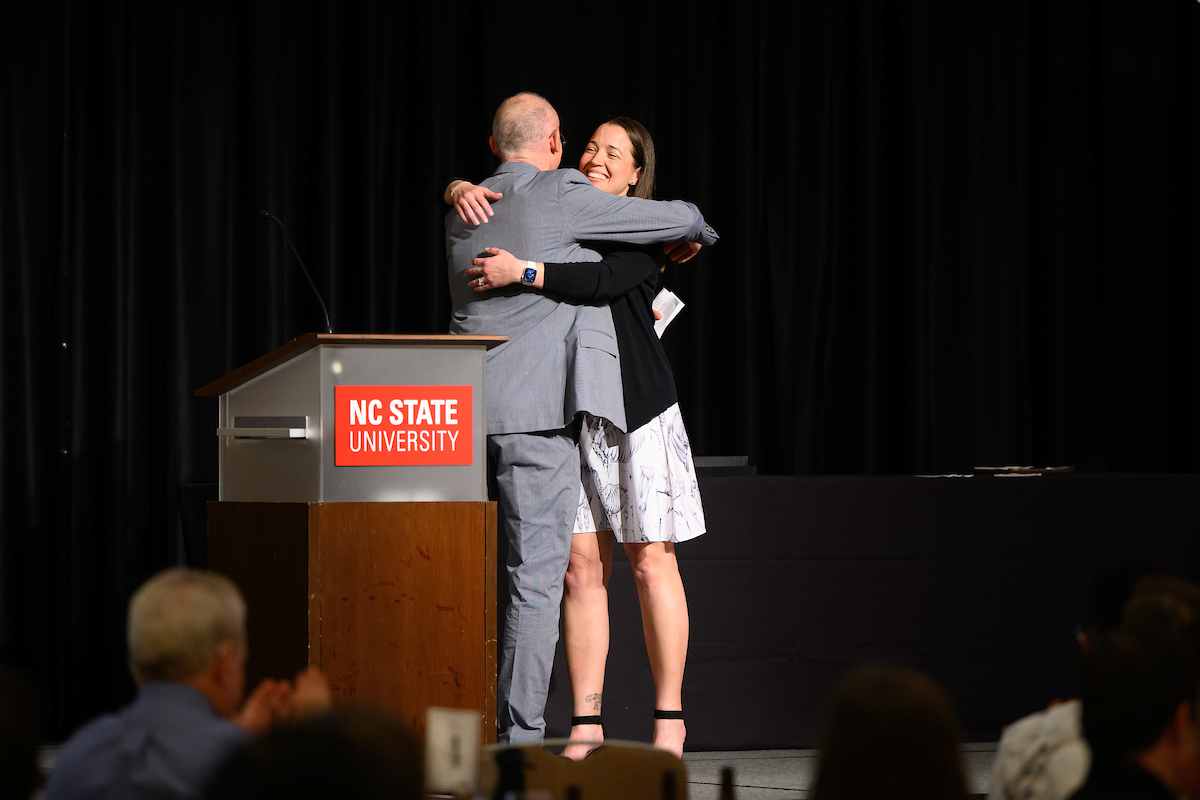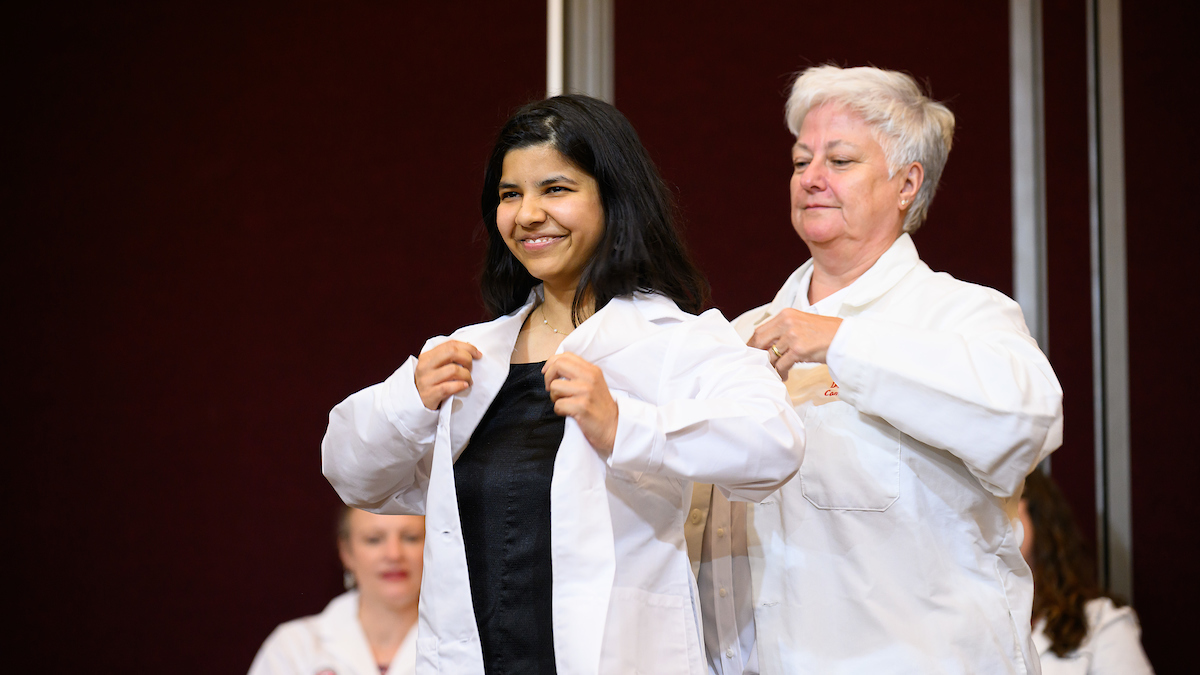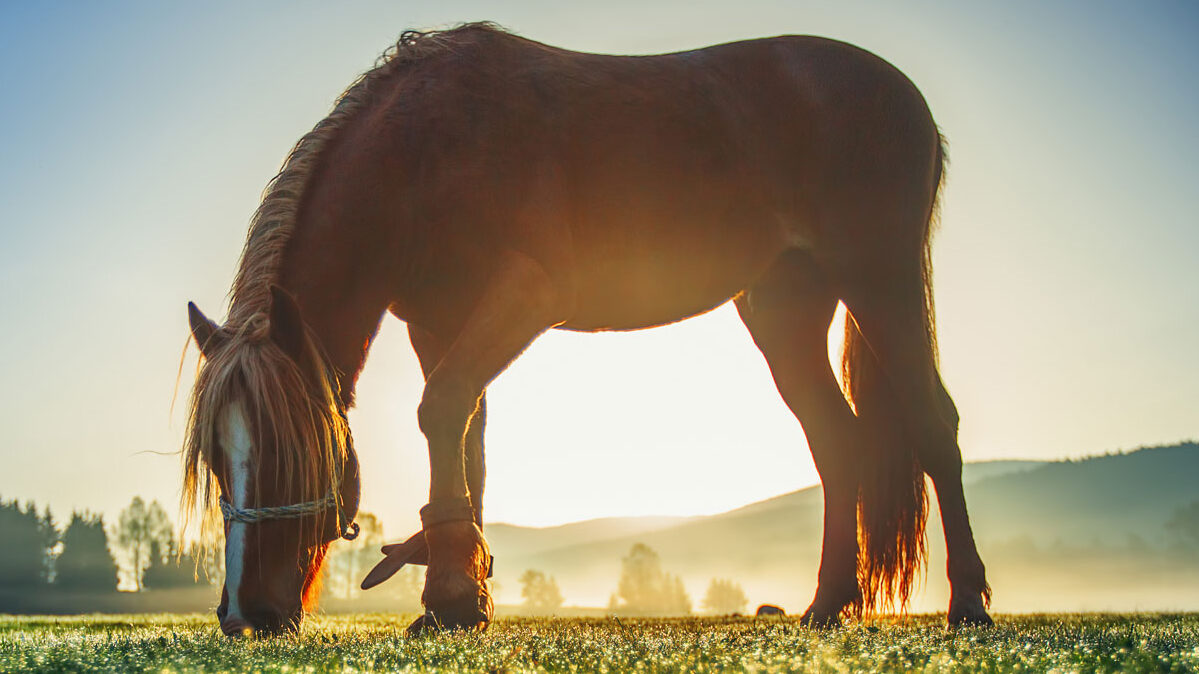What is it Like to Give a Polar Bear Anesthesia for 8 Hours?

CVM’s Alessio Vigani is one of the very few veterinarians who knows.
When you get a call on Wednesday that you’re needed to anesthetize a 500-pound polar bear on the following Monday, you don’t think about it. You go, just like Alessio Vigani did.
“I canceled everything I had planned and took off,” said Vigani. “The reason why you do it? It’s a polar bear. Are you going to say no?”
On Feb. 4, Vigani, an NC State College of Veterinary Medicine clinical assistant professor, managed anesthesia during orthopedic surgery on the leg of Nora, a polar bear at the Hogle Zoo in Salt Lake City. A week earlier, 3-year-old Nora had broken her right humerus, likely while roughhousing in her enclosure.
Nora couldn’t walk, her bones were still weak from a metabolic bone disease she had as a cub, putting her at risk for fractures.
After consultations, zoo staff said Nora would undergo surgery so a stainless steel implant could be inserted into the long bone and held together with screws. Vigani would be administering and monitoring the anesthesia the entire time.
Typically, if large animals like polar bears receive anesthesia it’s generally for short and simple procedures — drawing blood, a radiograph, a skin exam — that require immobilization because of the animal’s size and strength. Often, they aren’t even intubated.
This, Vigani knew, would be something entirely different. The surgery would end up taking 8 hours. A lot of people were waiting to see if everything would be OK. So was Vigani.
‘The Loneliest Polar Bear’
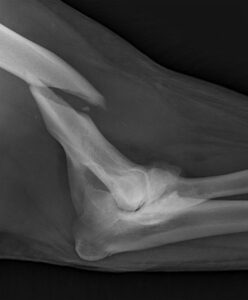
Nora is a celebrity, her story followed by millions since before she could open her eyes.
Born at the Columbus Zoo and Aquarium in November 2015, Nora had been raised by staff who bottle fed because her mother abandoned her six days after she was born. A twin brother lived less than two days.
Nora moved to the Oregon Zoo before she was 1, with the hope that an older polar bear there would become a surrogate mom. That bear was soon diagnosed with ovarian cancer and had to be euthanized. The Oregonian and Cleveland Plain Dealer newspapers later released an engrossing five-part series on Nora called “The Loneliest Polar Bear,” a chronicle of her difficult life and the efforts to make it better.
The series also provides sobering details about the plight of Nora’s species. In 2008, the polar bear was listed as threatened under the U.S. Endangered Species Act. They are often used to symbolize the consequences of climate change because of their dependence on sea ice, and their populations continue to dwindle, down 40 percent over the past decade, according to the most recent estimates from the United States Geological Survey. The USGC also estimates that two-thirds of the polar bear population will be gone by 2050.
She was moved to Utah in 2017, paired with a polar bear her own age named Hope. The two have become close and playful companions at the Hogle Zoo, a relationship Nora has never had before with another polar bear.
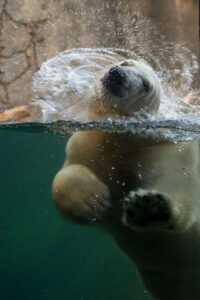
She’s a YouTube star, too. The video “Nora the polar bear cub growing up” has 7.8 million views. Even a minute-long clip of Nora playing in a kiddie pool filled with ice has nearly 350,000 views. There was a children’s book written about her.
Vigani was well aware that many considered Nora a part of their family since she never had one of her own.
“There are people that have tattoos of her face on their own body,” Vigani said. “That’s how extreme the fascination is.”
At the NC State Veterinary Hospital, Vigani primarily works in small animal critical care and emergency anesthesia. He is also active in the hospital’s extracorporeal services, including plasmapheresis, an innovative therapy that treats immune system disorders.
Thankfully, he is also now considered an extremely experienced polar bear anesthesiologist.
That’s because he has done it twice before, for an umbilical hernia repair in a male polar bear and for an artificial insemination procedure. Veterinary specialists from across the country were brought in for this one surgery — all volunteered their services. He has been working with the Hogle Zoo for a few years as a consultant for anesthesia and critical care cases.
Very few veterinarians have done what Vigani has now done three times. Even fewer have overseen 8 hours of continuous general anesthesia on a polar bear.
“In this narrow field, really, when you do it once you’re nearly an expert,” Vigani said. “It’s like, ‘Who has anesthetized a polar bear for longer than an hour? We need them.’”
The Day
“The approach to general anesthesia for polar bears is similar to what veterinarians do for large dogs. Just multiply the scale by five or 10 and know that they could possibly eat you,” Vigani said with a laugh.
Vigani said both animals have similar responses to anesthetics, and require many of the same types of drugs. The monitoring work is similar, too. Both require the same kind of cardiovascular and respiratory support. The big difference is that the chance for complications are much greater for large animals undergoing so many hours of anesthesia. For wild animal species the risk for life-threatening anesthetic complications is even higher.
That concern begins almost immediately.
The anesthetic protocol, including the sedatives, anesthetics and pain medication choices with respective doses, was carefully planned ahead of time by Vigani and Erika Crook, an associate veterinarian at the Hogle Zoo. The operating room, the anesthetic and monitoring equipment, and all the necessary supplies and instrumentation were set up the day before the procedure.
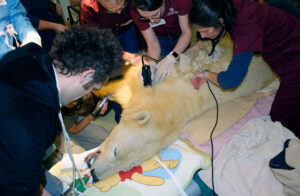
On the morning of Nora’s surgery, from 7-9 a.m., the team introduced themselves and went over everyone’s responsibilities. Then they induced the initial anesthesia in Nora with a dart injection. She was immobile within 30 minutes, and only then it was safe for Vigani and others to approach. Using a net, they lifted her onto a table and rapidly moved her from her enclosure to the operating room.
There she was intubated with a tracheal tube and attached to a mechanical ventilator. The necessary monitoring equipment included an EKG and tools to measure body temperature and body pressure, oxygen levels and the pressure of carbon dioxide in respiratory gases. Vigani then used a combination of inhaled gas anesthetic and intravenous injectable sedatives and analgesic drugs to maintain Nora’s anesthesia.
This is the frantic part, the very beginning. You want to be focused and have a clear picture in your head of what you are about to do next. You feel the pressure, your mind goes 100 miles per hour, but you need to stay calm and keep everyone else calm. It’s when Vigani watches how a patient reacts to the initial anesthesia stages. It’s like this, tense yet exciting, until the anesthesia reaches a steady state, usually about an hour or so into the procedure.
An innovative help: For the first time reported in polar bear medical treatment, Vigani inserted a catheter into an artery in a Nora’s ear so Vigani could accurately measure blood pressure for the duration of the surgery. The typical blood pressure cuff was too small for Nora. It barely fit on her back paw and wasn’t giving reliable readings.
“When I start catching my breath is when the surgeon starts holding his own breath,” said Vigani. “That’s the moment when they start cutting.”
The surgery was complex, the fracture difficult to repair. For the procedure, the zoo brought in Texas A&M University equine orthopedists Jeffrey Watkins and Katie Glass. Watkins is one of the very few in the world who has extensive experience with the procedure Nora required. He typically does it for adult horses, Vigani said. They shipped in special equipment directly from the producer of the implant.
The orthopedic surgeons had to get under Nora’s powerful leg muscle to realign the bone and perfectly place the stainless steel implant. In a Facebook post following the surgery, Hogle Zoo senior veterinarian Nancy Carpenter called it a “big, hard, aggressive surgery.”
Within 30 minutes after the surgery, Nora was steadily breathing on her own and was able to move her tongue so Vigani removed her tracheal tube. Within an hour she was awake and able to sit up and a few hours later, she was standing up.
A couple of days later, Vigani got word that was Nora was up and about and she was sent a video of her playfully sliding on the floor. “That was when I finally got to take that final celebratory deep breath,” Vigani said.
The Reward

After surgery, Vigani stayed for 4 hours to monitor Nora’s early recovery. She is doing well, according to the Hogle Zoo, and has been slowly putting weight back on her injured leg. Her implant is strong, and her recovery is expected to last a few months.
Vigani took home some souvenirs. One was a patch of Nora’s hair that had been shaved off to accommodate an IV catheter — polar bears are not soft. “They feel more like hay,” he said — and he also brought along a few blank canvases that now sport Nora’s paw prints. He is giving them to family and colleagues who love polar bears as much as he does.
“I was able to be a part of something good for an animal that is extremely valuable to nature and humanity,” said Vigani. “I had the wonderful opportunity to collaborate with a group of professionals who had the same aim.
“The best reward was just doing it and seeing a video of her excited two days later and playing.”
In the early evening after the surgery, Vigani took a taxi to the airport for his 11 p.m. flight back to Raleigh. At his gate, he put down his backpack and laid his head on it. Then he promptly fell asleep for three wonderful hours.
~Jordan Bartel/NC State Veterinary Medicine
- Categories:
